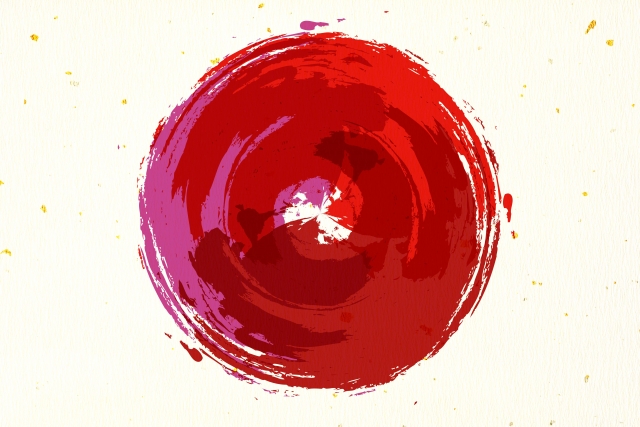Introduction to ‘Last Hope’

‘Last Hope,’ also known as ‘Juushinki Pandora’ in Japan, is a captivating anime series that has carved out a significant place within the science fiction and mecha genres. Created by the renowned Shoji Kawamori, known for his work on the ‘Macross’ series, and produced by the animation studio Satelight, ‘Last Hope’ brings together a unique blend of futuristic science fiction and thrilling mecha action.
The series is set in a post-apocalyptic world where humanity faces extinction due to a catastrophic event involving the Quantum Reactor. This event not only wreaks havoc on Earth but also brings forth monstrous biomechanical creatures, known as B.R.A.I., that threaten the remaining human population. The story revolves around the protagonist, Leon Lau, a brilliant scientist who feels responsible for the disaster and dedicates himself to finding a solution.
Leon, along with a diverse group of allies, pilots advanced mecha known as Pandora Units. These machines are humanity’s last line of defense against the B.R.A.I. and symbolize the hope and resilience of the human spirit in the face of overwhelming odds. Each episode of ‘Last Hope’ combines intense mecha battles with deep, thought-provoking themes about survival, technology, and the essence of humanity.
Shoji Kawamori’s vision for ‘Last Hope’ was to create a series that not only showcases spectacular mecha combat but also delves into the ethical and moral questions surrounding advanced technology and its impact on society. His storytelling, combined with Satelight’s high-quality animation, brings to life a richly detailed world that captures the imagination of viewers.
The series’ significance in the anime genre is further highlighted by its ability to blend traditional mecha elements with modern science fiction storytelling. ‘Last Hope’ appeals to fans of classic mecha series while also attracting a new generation of viewers with its innovative plot and dynamic characters. The character development, especially that of Leon Lau, adds a layer of depth to the narrative, making it more than just a typical action-packed anime.
‘Last Hope’ has garnered a positive reception from both audiences and critics, praised for its intricate plot, well-developed characters, and stunning animation. The series has sparked discussions about the potential and dangers of scientific advancement, making it a relevant and thought-provoking addition to the anime landscape.
In conclusion, ‘Last Hope’ stands out as a remarkable series that merges science fiction and mecha action in a compelling and visually stunning way. With Shoji Kawamori at the helm and Satelight’s exceptional production quality, ‘Last Hope’ offers a thrilling and intellectually engaging experience for anime fans. Whether you are a longtime admirer of mecha series or a newcomer to the genre, ‘Last Hope’ promises an unforgettable journey through a world where technology and humanity collide.
Plot Summary

In ‘Last Hope,’ the protagonist, Leon Lau, embarks on a harrowing journey to save humanity after a cataclysmic event known as the Quantum Reactor incident. This disaster, triggered by the malfunction of a revolutionary energy source, devastates Earth, leading to the emergence of monstrous biomechanical creatures called B.R.A.I. These beings wreak havoc on the remnants of civilization, pushing humanity to the brink of extinction.
Leon Lau, a brilliant scientist and the mind behind the Quantum Reactor, feels a deep sense of responsibility for the catastrophe. Driven by guilt and a burning desire to make amends, Leon isolates himself from society, dedicating his life to finding a solution. Living on the outskirts of a rebuilt city, he continues his research in secrecy, constantly haunted by the consequences of his creation.
The series kicks off with Leon being thrust back into the heart of the conflict. He reunites with his adoptive sister, Chloe, and joins a diverse group of allies, each with their own unique skills and motivations. Among them are the determined and skilled pilot, Queenie Yo, and the brave but conflicted Doug Horvat. Together, they form a formidable team, piloting advanced mecha known as Pandora Units. These machines are humanity’s last line of defense against the B.R.A.I. and symbolize the hope for a brighter future.
As Leon and his team confront the B.R.A.I., they uncover a deeper, more sinister plot. The Quantum Reactor incident was not a mere accident but part of a grand scheme orchestrated by a mysterious organization. This revelation sets off a series of intense battles and high-stakes confrontations, as Leon strives to dismantle the nefarious plans and prevent further destruction.
Throughout the series, Leon’s character undergoes significant development. Initially portrayed as a recluse burdened by guilt, he gradually transforms into a determined and inspiring leader. His interactions with Chloe, Queenie, Doug, and other allies highlight themes of redemption, forgiveness, and the power of human connection. Leon’s unwavering commitment to saving humanity, despite the overwhelming odds, serves as a beacon of hope for those around him.
Key events in ‘Last Hope’ include the team’s daring missions to reclaim territories overrun by B.R.A.I., their encounters with formidable adversaries, and the unraveling of the Quantum Reactor’s mysteries. Each episode is a blend of thrilling mecha combat, strategic planning, and emotional character moments, keeping viewers engaged and invested in the outcome.
The overarching conflict involving the Quantum Reactor is a central thread throughout the narrative. It not only drives the action but also raises thought-provoking questions about the ethical implications of scientific advancements. As Leon and his team delve deeper into the origins and potential of the Quantum Reactor, they grapple with moral dilemmas and the consequences of unchecked technological progress.
In conclusion, ‘Last Hope’ presents a compelling and intricately woven storyline centered on Leon Lau’s mission to atone for his past and secure humanity’s future. The series masterfully combines science fiction, action, and profound character arcs, making it a standout in the mecha genre. With its rich narrative and dynamic characters, ‘Last Hope’ captivates viewers and invites them to ponder the delicate balance between innovation and responsibility.
Character Analysis

In ‘Last Hope,’ the characters play pivotal roles in driving the narrative and adding depth to the story. Let’s take an in-depth look at the main characters: Leon Lau, Chloe Lau, Queenie Yo, and others, discussing their development and unique contributions to the plot.
Leon Lau
Leon Lau, the protagonist, is a brilliant scientist who shoulders the guilt of the Quantum Reactor incident. Initially portrayed as a recluse, Leon’s character undergoes significant development throughout the series. His journey from isolation to leadership is marked by his determination to right his past wrongs and protect humanity. Leon’s intelligence, combined with his sense of responsibility, makes him a compelling and relatable character. His interactions with his team highlight his growth, revealing his evolving capacity for empathy and teamwork.
Chloe Lau
Chloe Lau, Leon’s adoptive sister, is a key emotional anchor in the story. Her unwavering support and belief in Leon provide him with the strength to continue his mission. Chloe’s character is defined by her resilience and compassion, qualities that inspire those around her. As she takes on more responsibilities within the team, Chloe’s growth mirrors Leon’s, showcasing her transition from a supportive sister to a capable and determined ally. Her bond with Leon adds a layer of emotional depth to the series, emphasizing themes of family and loyalty.
Queenie Yo
Queenie Yo, a skilled pilot and a central figure in the Pandora Unit team, brings a fierce and determined spirit to the group. Her character is characterized by her bravery and tactical acumen, making her an invaluable asset in the fight against the B.R.A.I. Queenie’s development is marked by her ability to balance her fierce independence with the need for collaboration. Her interactions with Leon and the rest of the team highlight her role as both a leader and a mentor, showcasing her multifaceted personality.
Doug Horvat
Doug Horvat is another significant character, known for his bravery and tactical skills. As a member of the Pandora Unit, Doug’s journey is one of internal conflict and growth. His character arc explores themes of redemption and loyalty, as he navigates his complex emotions and relationships within the team. Doug’s interactions with Queenie and Leon highlight his struggle to reconcile his past with his present mission, adding a layer of complexity to his character.
Secondary Characters
The secondary characters in ‘Last Hope’ also play crucial roles in enriching the narrative. Figures like Jay Yun and Cain Ibrahim Hassan bring diverse perspectives and skills to the team, each contributing uniquely to the mission. Jay’s technical expertise and Cain’s strategic mind complement the core group’s abilities, creating a well-rounded and dynamic team. These characters add depth to the story, providing different viewpoints and enhancing the overall narrative.
Character Development and Roles
Each character in ‘Last Hope’ undergoes significant development, driven by their experiences and interactions. The series masterfully weaves their individual growth into the larger narrative, highlighting their unique roles in the story. Leon’s journey from guilt-ridden recluse to determined leader, Chloe’s transition from supportive sister to capable ally, and Queenie’s balance of independence and collaboration are just a few examples of the intricate character arcs.
The secondary characters also contribute to the narrative by bringing their distinct backgrounds and skills to the forefront. Their interactions with the main characters create a rich tapestry of relationships, showcasing the importance of teamwork and mutual support in overcoming challenges.
In conclusion, ‘Last Hope’ excels in its character development, offering a diverse cast with compelling arcs and meaningful contributions to the story. The characters’ journeys are intertwined with the overarching plot, creating a narrative that is both engaging and emotionally resonant. Through their growth and interactions, ‘Last Hope’ delivers a powerful message about the strength of human connection and the resilience of the human spirit.
Themes and Symbolism

‘Last Hope’ intricately weaves several major themes and symbols throughout its narrative, creating a rich tapestry that resonates deeply with audiences. Let’s delve into the themes of survival, technology, and the human spirit, and analyze the symbolism used in the series, particularly in relation to mecha and futuristic elements.
Survival
One of the most prominent themes in ‘Last Hope’ is survival. The series is set in a post-apocalyptic world where humanity faces extinction due to the catastrophic failure of the Quantum Reactor. This theme is explored through the relentless struggles of the protagonists as they fight against the B.R.A.I., mutated creatures threatening their existence. The concept of survival is not only physical but also emotional and psychological, as characters deal with loss, guilt, and the drive to protect what remains of humanity. Their determination to persevere in the face of overwhelming odds highlights the resilience of the human spirit.
Technology
Technology plays a dual role in ‘Last Hope,’ serving as both the cause of disaster and the potential solution. The Quantum Reactor, which initially promised boundless energy, becomes a symbol of mankind’s hubris and the unintended consequences of technological advancement. Conversely, the mecha and advanced weaponry developed to combat the B.R.A.I. represent the innovative spirit and resourcefulness of humanity. This dichotomy reflects the series’ nuanced take on technology: it can lead to destruction if misused but also offers hope and salvation when harnessed responsibly.
The Human Spirit
At its core, ‘Last Hope’ is a story about the indomitable human spirit. The characters’ journeys are marked by personal growth, sacrifice, and unwavering resolve. Leon Lau, the protagonist, embodies this theme as he seeks redemption for his role in the Quantum Reactor incident. His transformation from a guilt-ridden recluse to a determined leader exemplifies the power of the human spirit to overcome adversity. The bonds formed between characters further emphasize this theme, showcasing the strength derived from unity and mutual support.
Symbolism
The series employs rich symbolism, particularly through its mecha and futuristic elements. The Quantum Reactor, central to the plot, symbolizes both the pinnacle of human achievement and the perils of unchecked ambition. It serves as a reminder of the fine line between progress and catastrophe. The mecha, advanced robotic suits used to fight the B.R.A.I., symbolize humanity’s resilience and ingenuity. These machines are not just tools of war but extensions of the pilots’ will to protect their world and loved ones.
The B.R.A.I. themselves are symbolic of nature’s backlash against humanity’s reckless exploitation of resources. Their existence challenges the characters to find a balance between technological advancement and environmental stewardship. This symbolism extends to the series’ exploration of ecological themes, urging viewers to consider the long-term impacts of their actions on the planet.
Resonance with Audiences
The themes and symbolism in ‘Last Hope’ resonate with audiences on multiple levels. The struggle for survival and the ethical dilemmas surrounding technology are universally relatable, reflecting contemporary concerns about environmental degradation and the ethical use of scientific advancements. The portrayal of the human spirit’s resilience offers a hopeful message that even in the darkest times, there is potential for redemption and growth.
Furthermore, the series’ use of mecha and sci-fi elements appeals to fans of the genre, while its deeper philosophical questions engage viewers on an intellectual level. The combination of action, emotional depth, and thought-provoking themes makes ‘Last Hope’ a compelling watch.
In conclusion, ‘Last Hope’ masterfully blends themes of survival, technology, and the human spirit with rich symbolism to create a narrative that is both engaging and meaningful. The series invites viewers to reflect on the consequences of their actions and the enduring power of hope and unity in the face of adversity. Through its futuristic elements and heartfelt storytelling, ‘Last Hope’ leaves a lasting impact on its audience, making it a standout in the anime genre.
Cultural Impact and Reception

“Last Hope,” also known as “Jūshinki Pandora,” has made a significant mark within both the anime and sci-fi communities. Since its release, the series has garnered mixed yet engaging reactions from audiences and critics alike, contributing to its unique standing in the anime genre.
Audience and Critic Reception
The series has been generally well-received for its intricate storyline, dynamic character development, and the creative vision of Shoji Kawamori. Fans of the mecha genre appreciate the detailed animation and the high-stakes action sequences that keep viewers on the edge of their seats. Critics have praised the series for its ambitious blend of science fiction and mecha elements, noting the compelling narrative that addresses both technological marvels and their potential downfalls.
However, some critiques have centered on the pacing and complexity of the plot, which may seem convoluted to those not familiar with Kawamori’s storytelling style. Despite this, the overall reception has been positive, with many viewers enjoying the series’ exploration of futuristic themes and its thought-provoking questions about humanity’s relationship with technology.
Popularity and Influence
“Last Hope” has carved out a niche for itself within the anime and sci-fi communities. Its unique approach to the mecha genre, combined with a strong narrative and well-developed characters, has resonated with fans worldwide. The series’ exploration of ethical dilemmas and the consequences of technological advancement has sparked discussions among viewers, reflecting contemporary concerns about our own technological trajectory.
The anime’s influence extends beyond its immediate fanbase. It has inspired a renewed interest in mecha anime, drawing in new viewers who are intrigued by its sophisticated blend of action and philosophical inquiry. Additionally, the series has contributed to the ongoing conversation about the role of science fiction in exploring and challenging societal norms.
Awards and Recognitions
While “Last Hope” may not have garnered a multitude of awards, its impact is evident in its critical acclaim and the discussions it has inspired. The series has been noted for its high-quality animation, particularly the detailed mecha designs and the fluidity of the action scenes. The creative direction of Shoji Kawamori has also been a focal point of praise, highlighting his ability to weave complex narratives that engage and challenge viewers.
Cultural Impact
“Last Hope” stands out for its cultural impact, particularly in how it addresses the interplay between technology and humanity. The series delves into the ethical considerations of technological advancement, posing questions about responsibility, power, and the potential consequences of unchecked innovation. This resonates deeply in today’s world, where similar concerns are increasingly relevant.
The storytelling approach of “Last Hope” also sets it apart. By integrating scientific concepts with speculative fiction, the series creates a rich, immersive experience that appeals to both anime enthusiasts and sci-fi aficionados. Its depiction of a post-apocalyptic world, struggling to survive and adapt, mirrors real-world challenges and uncertainties, making it a poignant and relevant series for modern audiences.
In conclusion, “Last Hope” has made a notable impact within the anime and sci-fi genres through its engaging narrative, complex characters, and thought-provoking themes. While it may have its critics, the series’ ability to spark discussions and inspire a renewed interest in mecha anime underscores its cultural significance. “Last Hope” continues to captivate and challenge viewers, solidifying its place as a standout series in contemporary anime.








